 Whenever I think of Kazuya Minekura’s Wild Adapter (Tokyopop), an image pops into my mind: my bathtub. The water is hot and scented with some kind of mood-altering essential oil, possibly juniper, maybe rosemary, occasionally lavender. There is an alcoholic beverage perched on the edge of the tub to help me stay hydrated. And there is a volume of manga nearby.
Whenever I think of Kazuya Minekura’s Wild Adapter (Tokyopop), an image pops into my mind: my bathtub. The water is hot and scented with some kind of mood-altering essential oil, possibly juniper, maybe rosemary, occasionally lavender. There is an alcoholic beverage perched on the edge of the tub to help me stay hydrated. And there is a volume of manga nearby.
Yes, I am a bathtub reader. It’s not my go-to hygiene technique, more an occasional indulgence. And, if you’re going to indulge, why not gild the experience? (My fondness for baths is such that I really, really want someone to license Mari Yamazaki’s Thermae Romae. Erica Friedman sent me the first two Japanese volumes, and I can’t read a character of the dialogue, but it looks terrific.)
Now, not just any manga will do. It needs to have a certain languid, moody quality. Ideally, it should be impregnated with feelings, even if those feelings are ambiguous. I love One Piece (Viz), but it is not bathtub manga. I’m impatient for the next volume of The Kurosagi Corpse Delivery Service (Dark Horse), but it is not bathtub manga. A new volume of Bunny Drop (Yen Press) cannot come soon enough, but even it is not bathtub manga. Wild Adapter is bathtub manga.
Why is that? Well, it’s partly because, empirically good and ambitious as Wild Adapter is, it doesn’t wear its quality on its sleeve. It gives you the opportunity to believe that you’re indulging in a guilty pleasure, even though you’re actually seeing a spectacular piece of craftsmanship. That, right there, is what makes manga bathtub manga for me.
So, in celebration of the current Manga Moveable Feast, I thought I’d list some other titles that may achieve their fullest entertainment potential when paired with bubbles and booze:
 Antique Bakery by Fumi Yoshinaga (Digital Manga): It’s very, very difficult to pick just one of Yoshinaga’s works for this list, because she’s all about the appearance of effortlessness. She can go very dark places in her storytelling, and she does so routinely in work like Ôoku: The Inner Chambers (Viz), but you’ll rarely see her congratulating herself on her daring. Darkness is a part of life, and it can consume a moment without warning, which is certainly a recurring motif in Antique Bakery. Of course, the primary adjectives the series suggests are “funny” and “sexy,” and there are tons of illustrations of beautiful desserts.
Antique Bakery by Fumi Yoshinaga (Digital Manga): It’s very, very difficult to pick just one of Yoshinaga’s works for this list, because she’s all about the appearance of effortlessness. She can go very dark places in her storytelling, and she does so routinely in work like Ôoku: The Inner Chambers (Viz), but you’ll rarely see her congratulating herself on her daring. Darkness is a part of life, and it can consume a moment without warning, which is certainly a recurring motif in Antique Bakery. Of course, the primary adjectives the series suggests are “funny” and “sexy,” and there are tons of illustrations of beautiful desserts.
 Emma by Kaoru Mori (CMX): If there’s a mangaka better than Mori at dissecting a single, seemingly trivial moment and turning it into something telling and revealing, I’m hard-pressed to think of one. Aside from Jiro Taniguchi’s The Walking Man (Fanfare/Ponent Mon), Emma may be one of the most leisurely manga I’ve ever encountered. There’s certainly a story here – a star-crossed romance between a domestic and a member of the emerging middle class – but it’s draped in such obsessive interest in the behaviors and values of the era in which its set that it scarcely matters if you find Emma and William’s relationship plausible or sympathetic. You can just lose yourself in the minutiae of their lives and still be really, really satisfied.
Emma by Kaoru Mori (CMX): If there’s a mangaka better than Mori at dissecting a single, seemingly trivial moment and turning it into something telling and revealing, I’m hard-pressed to think of one. Aside from Jiro Taniguchi’s The Walking Man (Fanfare/Ponent Mon), Emma may be one of the most leisurely manga I’ve ever encountered. There’s certainly a story here – a star-crossed romance between a domestic and a member of the emerging middle class – but it’s draped in such obsessive interest in the behaviors and values of the era in which its set that it scarcely matters if you find Emma and William’s relationship plausible or sympathetic. You can just lose yourself in the minutiae of their lives and still be really, really satisfied.
 Genshiken by Kio Shimoku (Del Rey): A lot of nerd comedy is frantic and unfunny. Your average ugly duckling hero is thrown into humiliating misadventure, allowing the audience to laugh at them (and cringe at the parts of themselves that identify with the poor loser). That’s all well and good, and no one will ever go broke catering to the audience for that kind of material, but my nerd comedy of choice is pretty much embodied by Genshiken. I don’t think anyone would ever use the term “frantic” to describe it. It’s much more likely to be called “contemplative,” even “leisurely” and possibly “wistful.” Shimoku goes for neither shame comedy nor canonization with his cast of geeks. Instead, he takes them seriously as characters, which is to say he gives them highs and lows over a period of time and gives readers a clear and satisfying portrayal of their thoughts and feelings.
Genshiken by Kio Shimoku (Del Rey): A lot of nerd comedy is frantic and unfunny. Your average ugly duckling hero is thrown into humiliating misadventure, allowing the audience to laugh at them (and cringe at the parts of themselves that identify with the poor loser). That’s all well and good, and no one will ever go broke catering to the audience for that kind of material, but my nerd comedy of choice is pretty much embodied by Genshiken. I don’t think anyone would ever use the term “frantic” to describe it. It’s much more likely to be called “contemplative,” even “leisurely” and possibly “wistful.” Shimoku goes for neither shame comedy nor canonization with his cast of geeks. Instead, he takes them seriously as characters, which is to say he gives them highs and lows over a period of time and gives readers a clear and satisfying portrayal of their thoughts and feelings.
 Nana by Ai Yazawa (Viz): Okay, the lead characters are sitting in a bathtub on the cover. A lesser blogger may simply rest his or her case based on the overwhelming evidence that image provides, but no! I will soldier on to say that it’s Yazawa’s facility for big, messy emotions writ achingly small and her feverish ability to convey a vibe that’s both stylish and strangely nostalgic that make Nana ideal for a good, long soak. She’s packed the book with fascinating, complex, sometime unlikable characters that interact in ways that are constantly surprising but make perfect sense. And, since they’re very often shown to be imbibing, you won’t have to drink alone.
Nana by Ai Yazawa (Viz): Okay, the lead characters are sitting in a bathtub on the cover. A lesser blogger may simply rest his or her case based on the overwhelming evidence that image provides, but no! I will soldier on to say that it’s Yazawa’s facility for big, messy emotions writ achingly small and her feverish ability to convey a vibe that’s both stylish and strangely nostalgic that make Nana ideal for a good, long soak. She’s packed the book with fascinating, complex, sometime unlikable characters that interact in ways that are constantly surprising but make perfect sense. And, since they’re very often shown to be imbibing, you won’t have to drink alone.
 Suppli by Mari Okazaki (Tokyopop): Of all the manga heroines who could use a good long soak in a buble-filled tub, I would have to rank Minami very near the top. She works too hard for an advertising agency that’s often unappreciative of her efforts. It would display an excess of delicacy to describe her love life as “messy.” And yet this manga is indulgent because it’s very beautifully drawn and because Minami’s trials feel so delicately true. She feels very much like someone you might know, and she’s definitely someone you wish well. And, since it seems likely that we may never see the remainder of this wonderful series, it’s nice to be someplace private where you can cry into your washcloth.
Suppli by Mari Okazaki (Tokyopop): Of all the manga heroines who could use a good long soak in a buble-filled tub, I would have to rank Minami very near the top. She works too hard for an advertising agency that’s often unappreciative of her efforts. It would display an excess of delicacy to describe her love life as “messy.” And yet this manga is indulgent because it’s very beautifully drawn and because Minami’s trials feel so delicately true. She feels very much like someone you might know, and she’s definitely someone you wish well. And, since it seems likely that we may never see the remainder of this wonderful series, it’s nice to be someplace private where you can cry into your washcloth.
So, who’s with me? Are there any other bathtub manga readers out there? What are your titles of choice?






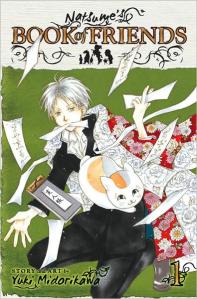

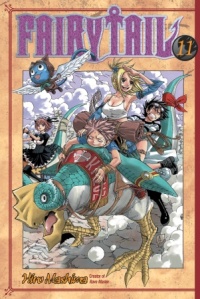

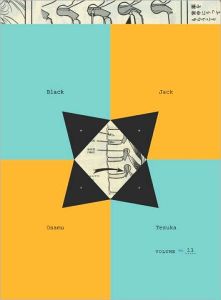

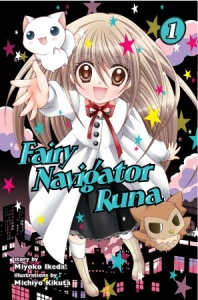




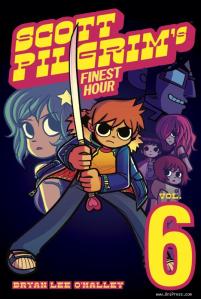


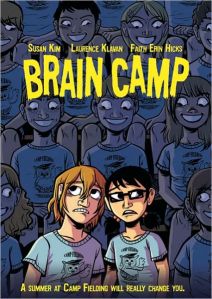






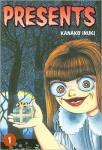

CMX-cellence
Now that I’ve got the negativity out of my system, I wanted to take the opportunity to celebrate some of my favorite CMX titles. I can pick ten with absolutely no difficulty at all. The difficulty is limiting myself to ten.
There are at least five other titles that were serious squeakers for inclusion on this list, or would have been if more volumes had been published. I think just looking at these ten titles makes you realize what the folks behind CMX were able to accomplish during their too-short run. What were your favorite CMX titles? Feel free to mention them in the comments, or just heap abuse on DC, because that isn’t going to get old here for a while.